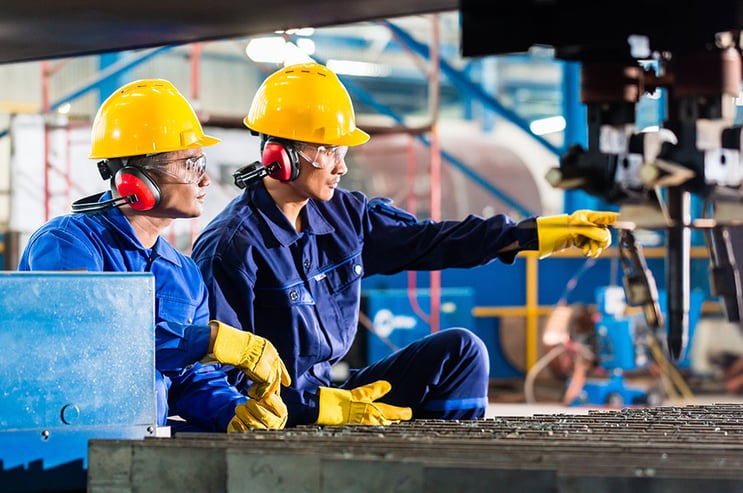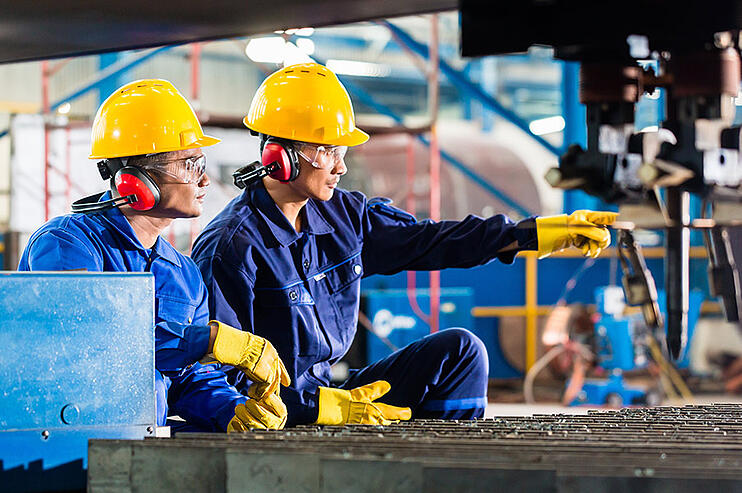A visit to an industrial factory is a sobering experience. When you enter, your senses are assaulted by sharp smells and loud sounds from machinery running at total capacity. Accidents happen daily in these places, and it’s up to you, as the employer, to prevent them by protecting your employees.
It’s important to remember that safety is not just a priority in an industrial factory — it’s a necessity. Employees must be aware of the dangers in their work area and take the necessary precautions to avoid accidents. You can do a few key things as an employer to help ensure your employees stay safe.

Ways to Prioritize Employee Safety in an Industrial Factory
It’s impossible to know when and where an accident will occur, but that doesn’t mean you can’t take precautions to prevent them. This is especially important in an industrial factory, where employees work with dangerous machinery. Here are a few ways you can prioritize employee safety:
Method #1 Create a Safety Plan
The most important thing you can do as an employer is create and enforce a safety plan. The plan should outline the specific hazards in your factory and how to avoid them. Employees should be trained on using the equipment safely and be aware of the risks associated with their job.
This plan should also include specific safety procedures for each factory area; all employees must be familiar with them. It’s also important to regularly update and revise the safety plan as new dangers are identified.
Method #2 Provide Protective Equipment
Many industrial accidents can be prevented by wearing the proper safety equipment. Employees must be provided with the correct type of safety gear for their job and be required to wear it. This way, they are less likely to be injured if an accident does occur.
Some of the most common pieces of safety gear include hard hats, goggles, face shields, earplugs, and gloves. You could also provide them with protective clothing made with fire-resistant fabrics, primarily if they work near open flames or heat. Ensure the gear is in good condition and replace it when worn or damaged.
Method #3 Ensure Proper Training
It’s not enough to provide safety gear and a safety plan — employees must be adequately trained. They should also be familiar with the specific procedures for their factory area. Training should be provided at regular intervals and be updated as needed.
Doing so can help ensure that employees know the dangers they face on the job and learn how to avoid them. Furthermore, they will be better equipped to handle an emergency if one does occur.
Method #4 Enforce Safety Rules
It’s essential to have safety rules in place and enforce them. Employees must know the dangers they face while working and understand the importance of following safety rules. Governments should be specific to the factory and easy to understand.
Employees should be held accountable for following the safety rules. This includes disciplinary action for those who don’t comply, including termination. Through this, you can help create a safety culture in your factory.
Method #5 Regularly Inspect the Factory
It’s essential to inspect the factory for potential hazards regularly. This includes checking the equipment for safety hazards, looking for potential fire hazards, and ensuring safe work areas. You could also conduct risk assessments. If any threats are identified, you must take immediate action to correct them.
Employees should also be encouraged to report any safety concerns they may have. This way, you can address them before they become a problem. Of course, this means you need a system to receive and respond to reports. So, ensure a designated person is responsible for safety inside the factory.
The Importance of Workplace Safety
Factory safety should not be taken lightly — it’s the difference between life and death. As an employer, you must ensure your employees are safe while they work. Remember, safety should be your number one priority.
However, it’s not just the employer’s responsibility; employees must also take safety into their own hands. They should be aware of the dangers in their work area and take the necessary precautions to avoid accidents. By doing so, they can help to keep their workplaces safe and injury-free.
Factory accidents can be traumatic and life-altering. By prioritizing employee safety, you can help ensure your employees return home safely to their families each night. Follow these tips to create a safe working environment for your employees and protect them from harm.

